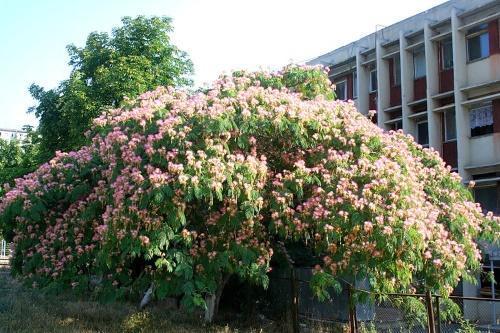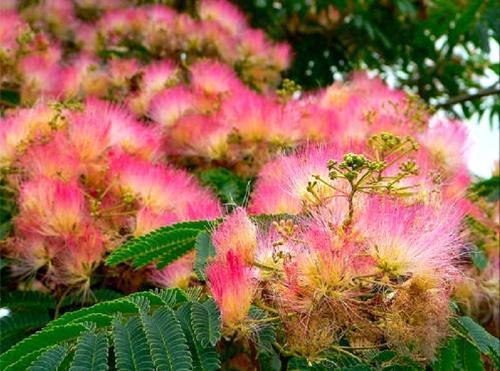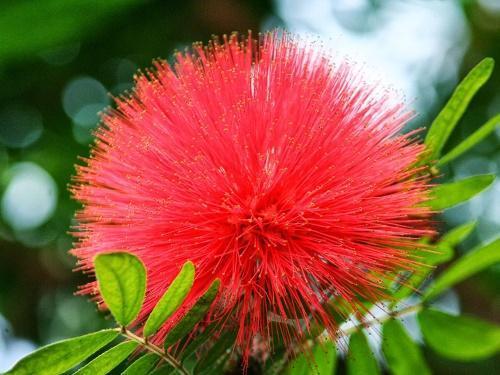Charming Tropicana Silk Acacia
 Most of us, hearing the word "acacia", immediately imagine a tall powerful tree with white delicate flowers, spreading an intoxicating aroma around itself. And this is true when it comes to common culture, often found both in the wild and in city parks. However, among these deciduous trees there is an amazing creation of nature, completely unlike them - this is silk acacia. It got its name due to the spectacular and original flowering, in scientific circles, the acacia is known as Lankaran.
Most of us, hearing the word "acacia", immediately imagine a tall powerful tree with white delicate flowers, spreading an intoxicating aroma around itself. And this is true when it comes to common culture, often found both in the wild and in city parks. However, among these deciduous trees there is an amazing creation of nature, completely unlike them - this is silk acacia. It got its name due to the spectacular and original flowering, in scientific circles, the acacia is known as Lankaran.
The second name of the culture is silk albitsia, and the people call it “silk tree”.
Description of the species
Silk acacia belongs to the legume family, where it is a representative of the mimosa subfamily. Its homeland is considered to be the city of Lankaran in Azeibarjan, which gave the name to the species. Being a long-liver, acacia actively develops up to 30 years, then begins to age slowly: the bark is covered with cracks, and the crown is thinning. The general lifespan of a culture is on average 50 years, some specimens live up to the 100th anniversary.
Albicia it grows mainly in the form of a powerful tree: its height in natural conditions can reach 20 m, and the trunk girth is 3 m. Shrubby varieties of acacia grow no less large, up to 6 m in height. The lush crown consists of beautiful large leaves. The light green leaf plate is 20 cm long and has an openwork pinnate shape. In winter, the leaves fall off, but they are able to stay on the branches until the end of autumn.
At night, as well as in extreme heat, the leaves curl up, as if closing, and hang down.
Albitsia owes its popularity to its unusual flowering. In the middle of summer, among the crown, original and juicy inflorescences bloom, similar to large fluffy umbrellas made of long threads. Their tips are slightly darker and have a silky sheen. The main color of the inflorescences is pink, but there are also varieties with red, yellow or white umbrellas.
Like the common acacia, blooming albitsia also spreads a delicate sweet scent around it.
Growing features
The subtropical nature of acacia leaves its mark on the requirements for growing conditions, primarily with regard to lighting and air temperature. The heat-loving culture can most often be found outdoors in the southern regions, where winters are warm and come late. But even as a houseplant, she feels good indoors, especially there is an opportunity to provide deciduous acacia with a cool winter. The best option would be winter Garden.
The minimum temperature for outdoor silk acacia is at least 15 degrees below zero, for indoor plants - at least 5 degrees. In colder conditions, it freezes out.
 What does silk acacia love? She is not very demanding in care and needs such conditions:
What does silk acacia love? She is not very demanding in care and needs such conditions:
- good lighting (it grows poorly in the shade);
- comfortable temperature up to 25 degrees Celsius in summer;
- average air humidity;
- complex mineral dressing from spring to autumn;
- abundant watering with warm water during the growing season and scanty - during "hibernation";
- dormant period for indoor plants with a cool winter;
- sanitary and formative pruning.